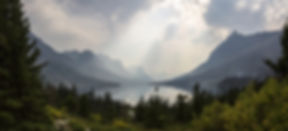Wasps, Hornets and Yellow Jackets
This has been the summer of wasps, hornets and yellow jackets. People are getting stung daily and some are having severe reactions to these stings. These stinging insects are making outdoor gatherings almost impossible. These stinging insects are desperately looking for food and water to bring back to their nests.
PAPER WASPS:
They are black or brown with yellowish markings. They have a narrow body with a pinched waist. Their legs hang in a distinctive manner below their body as they fly. Paper wasp nests are often umbrella-like shaped and are never enclosed. Nests are found hanging from porch ceilings, door frames, eves, and railings. We have found these nests in openings in gates, machinery and under tarps. If the nest is touch, it is very likely you will get stung. They have between 100-5000 workers and like to scavenge for sweets and proteins. Paper wasps have a stinger and will sting in order to defend themselves or the colony. The venom can cause severe allergic reactions.
YELLOW JACKETS:
These stinging insects have a yellow and black color pattern and are between 3/8-5/8 inches. Yellow Jackets live in nests constructed of paper carton, which can grow to be as big as a basketball. One nest will contain a number of combs attached below another. Depending on the species, the nest may be near the ground, in plant roots, logs or timber. They are predatory and are always looking for sweets and proteins. Yellow jackets have a smooth stinger and therefore have the ability to sting a victim over and over again increasing the amount of venom that is introduced into them. The venom from a yellow jacket sting can cause a severe allergic reaction in some people and they will require immediate medical attention.
BALD-FACED HORNETS:
They are largely black in color, with a mostly white face. They are 1/2 -5/8 inches in length. Bald-faced hornets build aerial nests out of paper. The nests are usually in exposed locations, often on trees, utility poles, over hangs and other structures. The nests can be quite large. They are very attracted to scraps near outdoor eating areas and especially like sugary substances. The colonies have between 100-700 workers. They can become very aggressive if threatened.
HORNETS:
These are larger in size and are brown with yellow abdominal stripes. They build paper carton nests that are usually covered in a brown paper envelope as protection. Typically, the nests can be found in hollow trees, barns, out buildings, hollow walls of houses and attics. The colonies have between 100-700 workers. They are very aggressive and will sting to defend their nest. Fruits and sodas are very attractive to hornets.
Because the stinging insects are so desperate for food and water this time of year, it is important to be aware of your surroundings so you don't accidentely step on a wasp, or run into a nest. Several stings can be very dangerous to a person even if they haven't had an allergic reaction in the past. If your noticing nests around your home or in the trees call the Pest Professionals at Xtreme Weed & Pest Solutions to prevent having you or your family getting stung.
*TIPS:
1. Wasps traps are great BUT don't hang them near your living space. These attract wasps, yellow jackets and hornets which means there will be a lot around where you hang out.
2. They are desperate for water and food. Be careful around pets water dishes, swimming pools an hoses. The stinging insects will be all over those.
3. Do not leave soda cans unattended because they will get inside and sting you as your drink (very dangerous) Leaving any food out will attract them.
4. Wasp sprays work great BUT they will only kill on contact so when the workers come back it will have no affect on them.





















